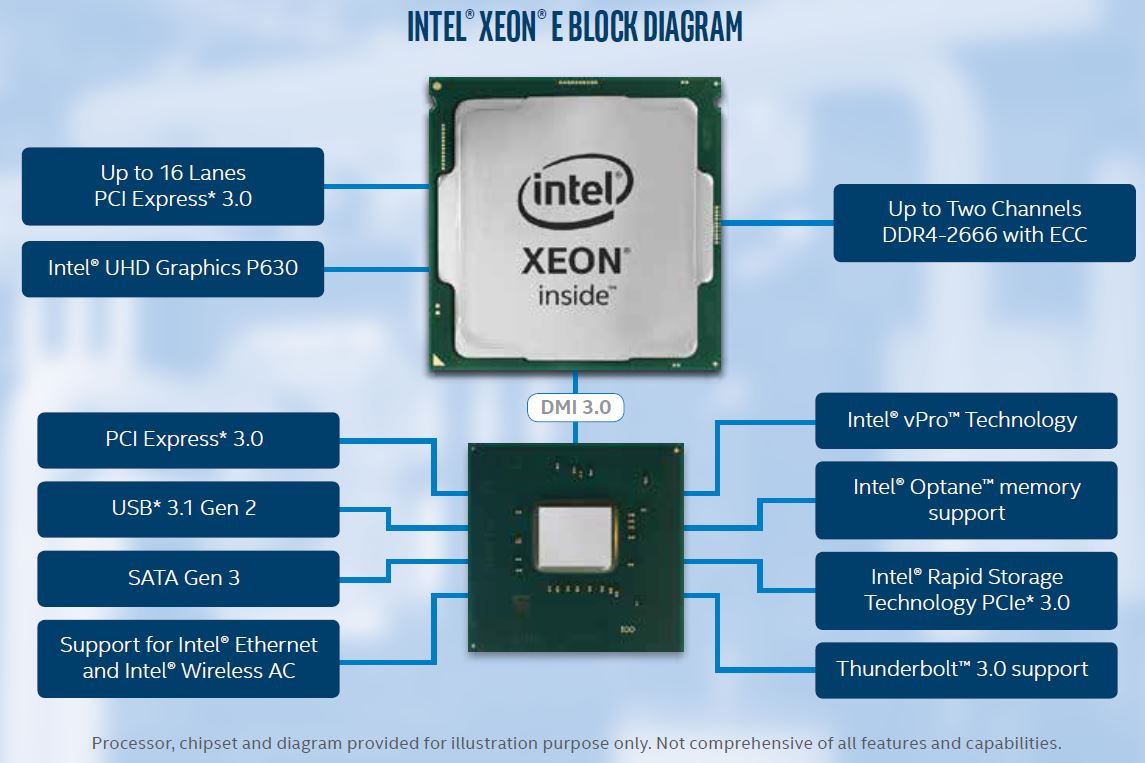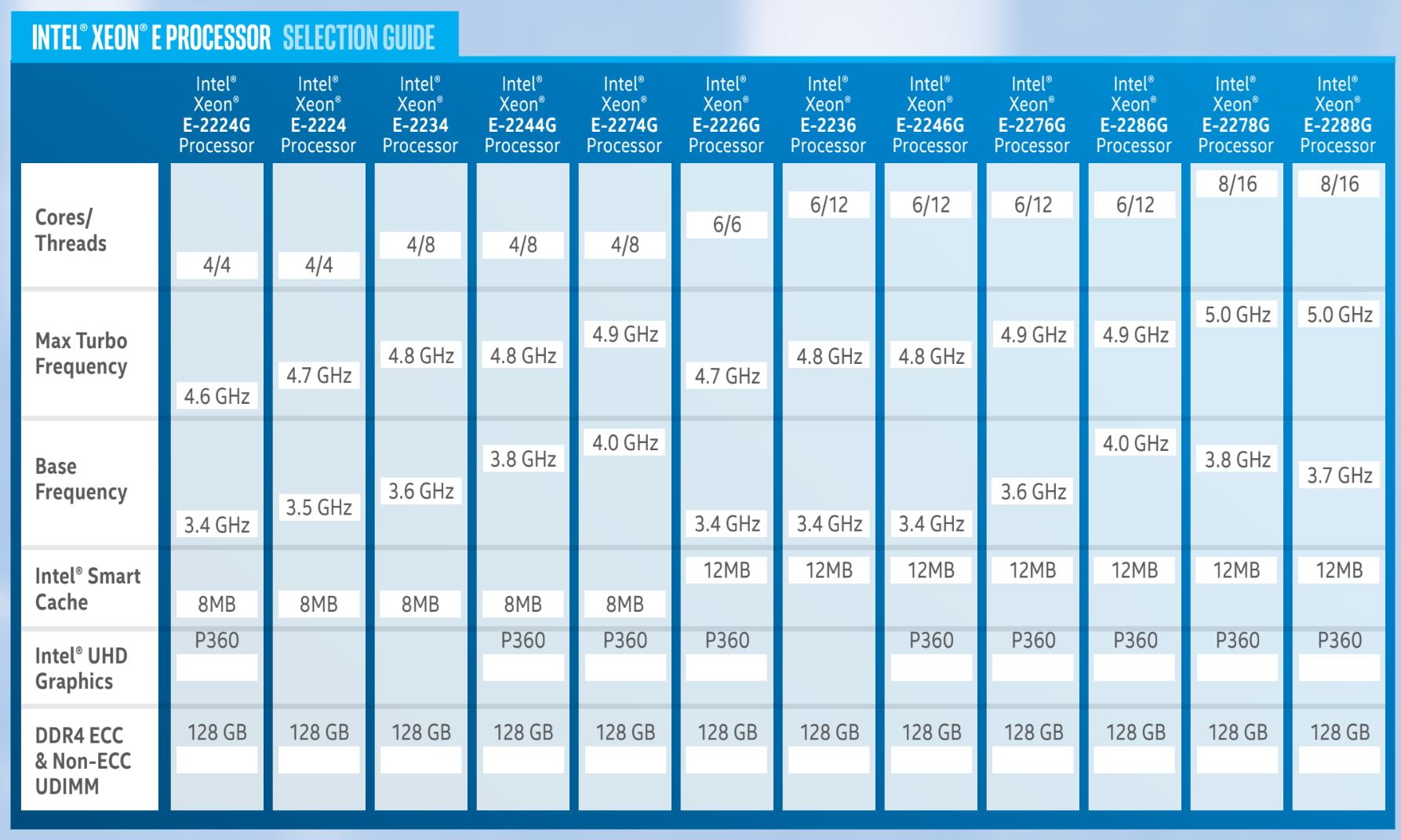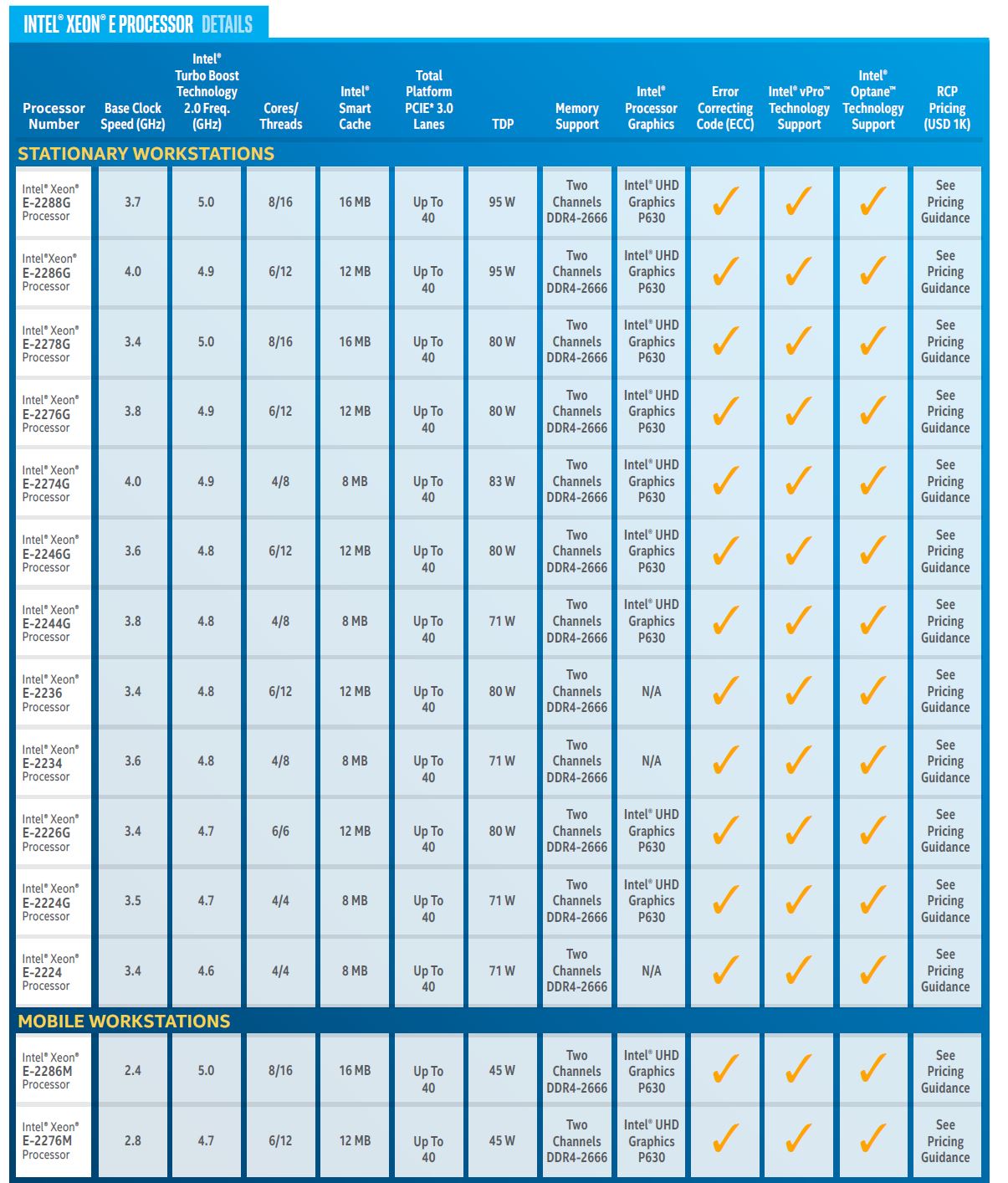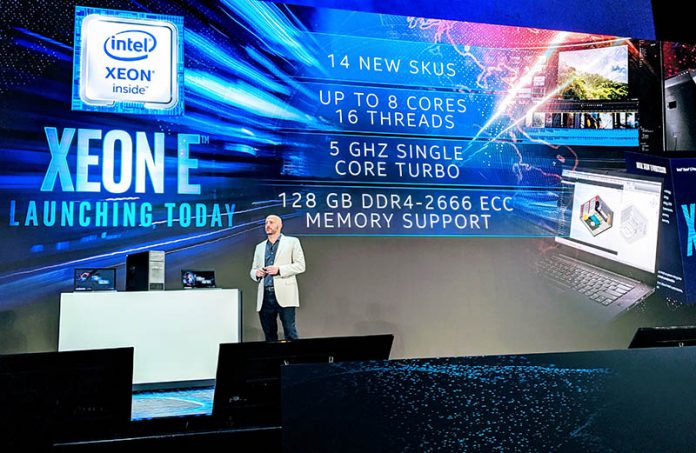At Computex 2019 today, Intel released 14 new entry-level Xeon SKUs in the Intel Xeon E-2200 line. This is largely a refresh of the original Intel Xeon E-2100 series launched last year marking a less than one year refresh cycle. At STH we have had comprehensive coverage of the Intel Xeon E-2100 series and have a placeholder for all of our coverage in Intel Xeon E-2100 and Xeon E-2200 Coverage from STH Your Guide. Keep that bookmarked to see our coverage of the segment.
Intel Xeon E-2200 Platform
The Intel Xeon E-2200 series is socket compatible with the Intel Xeon E-2100 series. That means it has a similar feature set including PCIe Gen3 support, and PCH functions like USB 3.1 and SATA III ports. Since we already covered the platform in detail, we can refer you to our piece: Intel Xeon E-2100 An Updated Platform and Market Segment.

At the same Computex 2019 Keynote Intel is announcing Ice Lake its next CPUs in the segment based on its Sunnycove microarchitecture. The Intel Xeon E-2200 series is still based on the same Skylake-derived architecture like current desktop parts are.
Intel Xeon E-2200 Refresh SKUs
We just got this table a few minutes before launch at the Intel keynote. As a result, we have not put it into our usual format. Expect our SKU list and value analysis piece to follow.


Perhaps the most interesting parts here are the Intel Xeon E-2286G and Intel Xeon E-2278G. As the last digit before the “G” indicates, these are 8 core parts, a first for Intel in this segment. The G in those SKUs indicates onboard graphics which is still Intel’s Gen9 offering, not the Gen11 that we are seeing announced today in consumer notebook segments.
Final Words
Overall, this is a necessary refresh. Adding two more cores is a big deal. As we covered in Looking back at Intel Xeon E3-1200 V1-V6 to the New Xeon E-2100 just twelve months ago this segment’s Intel Xeon E3-1200 V6 series was limited to four cores. We have a 100% increase in core counts combined with an increase in IPC and clock speed over a span of 12 months in the market. That is a big deal.





actually most interesting is E-2288G, since E-2278G is 3.4GHz, not 3.8
5Ghz only for a single core? Strange, the 9900K does it on 2 cores and the 9900KS even on all cores.
So they did slow it down abit, maybe dure to Turbo 2.0 instead of 3.0
Nonetheless, awesome CPU for webserving!
I’m not sure how the conclusion reads that there is an increase in IPC for these SKUs.
Given that they’re the same silicon as the consumer offerings 8700 through 9900 with ECC as only differentiator there is absolutely zero IPC gains. Clocks are higher giving you a bit more performance at the expense of higher power consumption but that’s about it.
Now if these chips were actually not made of unobtanium the ECC support would be interesting to have, but with current shortages and subsequent pricing choosing Xeon W if you need ECC or choosing X299/Core X for high clock speeds and 128Gb support seems to make more sense.
That is until you realize you can get Ryzen/Ryzen Pro/Threadripper with equivalent features, performance and at a lower price.
David there was IPC from Kaby Lake to Skylake including when you’ve got mitigations on.
Any news on 32GB DDR4 UDIMMs actually being available yet, though? I’d love to upgrade to an E-2288G and would be willing to pay a premium to do so but not until I can also fit it out with 128GB RAM.
Just an observation, the Intel Xeon E Processor Selection Guide image from Intel above is, presumably incorrectly, listing the E-2288G as having 12MB Smart Cache while other materials/content suggests 16MBs (same as 9900K).
The 8 core pieces are specified to have 12MB cache on the selection guide image, but on the details image they are specified to have 16MB cache instead.
@UltimatiumTomato I have not seen any IPC increase from Sky Lake > Kaby Lake > Coffee Lake in any independent benchmark, and given they are all the same architecture on 14nm+(+++?) I would be highly surprised if there is any IPC improvement until a new chip design is used.
The last IPC increase jump was from Broadwell to Kaby Lake, and the last significant (> 10%) IPC increase was from Ivy Bridge to Haswell
@Callum Stott the first 32Gb UDIMM is starting to appear in retail channels like Samsung M471A4G43MB1-CTD (SO-DIMM format) and G-Skill F4-3200C14D-64GTZDCB
@David – The G-Skill kit you linked is essentially just two 16GB DIMMs on each PCB/module for very specific 2 DIMM slot ASUS motherboards only supporting 64GBs of RAM.
The Samsung SO-DIMM kit that you’ve mentioned is something that I’ve been keeping my eye on for a while. They do look good. If I could get similar modules in desktop DIMMs, I’d buy a set of 4 straight away.
I am aware there’s the option to buy 260 pin SO-DIMM to 288 pin desktop DIMM convertors, but am not yet confident/comfortable about the compatibility and stability of doing so.
Too bad that 2286M wasn’t compatible with the C246 chipset. I assume it is a soldered part. That would make a fantastic little CPU for a home server/NAS. I’m running a 2176G and would love a 45W part.
Headline says “Available”, but where?
where are the low-power Xeon Es? Last generation to include L-variants was E3 v5 and afterwards the Ls just disappeared.
I have a small home server with an E3-1235L v5 and I was thinking about an upgrade to 6-8 cores but there is nothing in Intel’s lineup since v5. Also nothing in AMD’s lineup.
Wondering if eliminating the L Xeons was a market-related decision (i.e. not enough customers) or a technical one (i.e. the new chips have issues with power consumption) .. or maybe a combo of both.
Still hoping that such CPUs will (re)appear sometime … i.e. 6+ cores, ECC support, GPU and low power. Otherwise, what CPUs are we supposed to use to “serve the home”?!
Where can you buy any of these? I would be interested in a E-2278G or E-2288G but cannot find any.